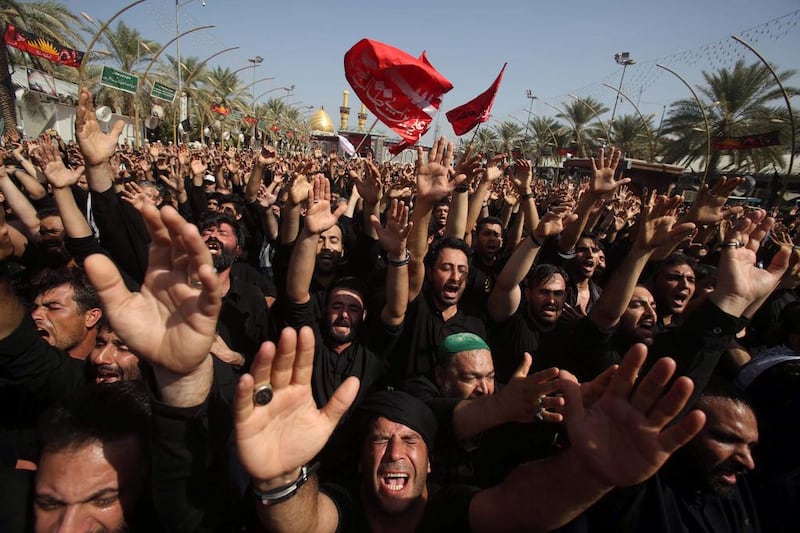According to the Islamic calendar, the new year began a couple of weeks ago, with the first month being Muharram. For Muslims, the month is marked in several ways – with the more spiritually inclined tending to additional acts of piety, for example.
But it is also viewed with an abundance of emotions – and, sometimes, very different ones among both Shias and Sunnis. On certain days, it evokes certain common lessons between Muslims, Jews and Christians as well – the month contains interfaith as well as intrafaith resonances. In the present-day Middle East, there are more than enough reasons to justify different types of emotions.
According to various Prophetic narrations, fasting – an ancient Abrahamic practice – in the month of Muharram is an especially laudable act. It is more commendable at this time than any time other than Ramadan. So is giving to charity.
But there is a particular day that draws a great deal of attention from the believers: the 10th day, known as Ashura. It is said in the Islamic tradition that fasting that day was a well-known practice of Prophets, including Noah and Moses.
Moses is especially remembered by the Muslim community on the 10th day of Muharram. In the Islamic tradition, he is known as one of the foremost apostles, who is said to have been rescued, along with his people, from the machinations and tyranny of Pharaoh. It’s the rescue from that tyranny that Muslims, Christians and Jews remember and recall – but Muslims remember another tyranny that day. The grandson of the Prophet Mohammed, Imam Hussein, was slaughtered, along with many of his family, by a militia of the then second Ummayad ruler, Yazid, at Karbala.
It is often said that Sunni Muslims neglect honouring Hussein on that day, while Shia Muslims are well known for their public displays of lamentation. In many Sunni communities, nevertheless, there will be many religious leaders who will advocate the remembrance of the sacrifices of that day, when a tyrannical ruler reigned and innocent blood was spilt.
There is a particular symbolism that resonates around the day, which was on Tuesday this week. The most egregious example of tyranny and death in the modern Muslim world is that of Syria – where several hundred thousand people have been killed over the past five years. This is not a Sunni versus Shia conflict – many Shias in and out of the region oppose the regime of Bashar Al Assad for what it is doing to mainly Syrian Sunnis – but it is indeed striking.
Even while so many leaders in Iran publicly mourn the passing and sacrifices of the likes of Hussein, through various communal remembrances, at the same time Tehran stands shoulder-to-shoulder with the Assad regime in Syria. While much is correctly discussed in the international arena about Sunni foreign fighters who join radical groups in Syria, little, it seems, is said about Shia foreign fighters in Syria – from Lebanon, Iraq and much farther afield. While they may be recruited under the banner of defending Shia beliefs, they’re not fighting on the side of the people as Imam Hussein did. If there are the likes of Hussein in Syria today, they are more likely to be those suffering under the indiscriminate and brutal barrel bombs of the regime.
But this is 2016. Many within the Muslim religious establishment, whether Sunni or Shia, will laud and praise the virtues of the grandsons of the Prophet Mohammed, both Hassan and Hussein. Both were known for being opposed to the oppression of their ages – taking different routes, using different methods, but certainly never standing alongside injustice.
Within Muslim religious establishments today, be they Sunni or Shia, are there so many who can claim the same? Or are so many in those religious establishments so often co-opted for providing “moral cover” and aggrandisement for unwarranted actions? Alas, there are many such examples to consider in the region.
Many Islamic religious luminaries of the past and present argue that Ashura is a day of joy and a day of sadness. The joy comes from knowing that tyranny was defeated in the form of Pharaoh, and the sadness from seeing what tyranny can do when unchecked in the form of Karbala. Those remain to be lessons for the Muslim world writ large, for Sunnis and Shias alike – and, similarly, for believers and non-believers in humanity.
With the state of the region as it is now, nevertheless, one might ask sincerely if it is the Husseini model that is more preponderant, or that of his opponents.
Dr HA Hellyer is a senior non-resident fellow at the Atlantic Council in Washington and the Royal United Services Institute in London
On Twitter: @hahellyer





